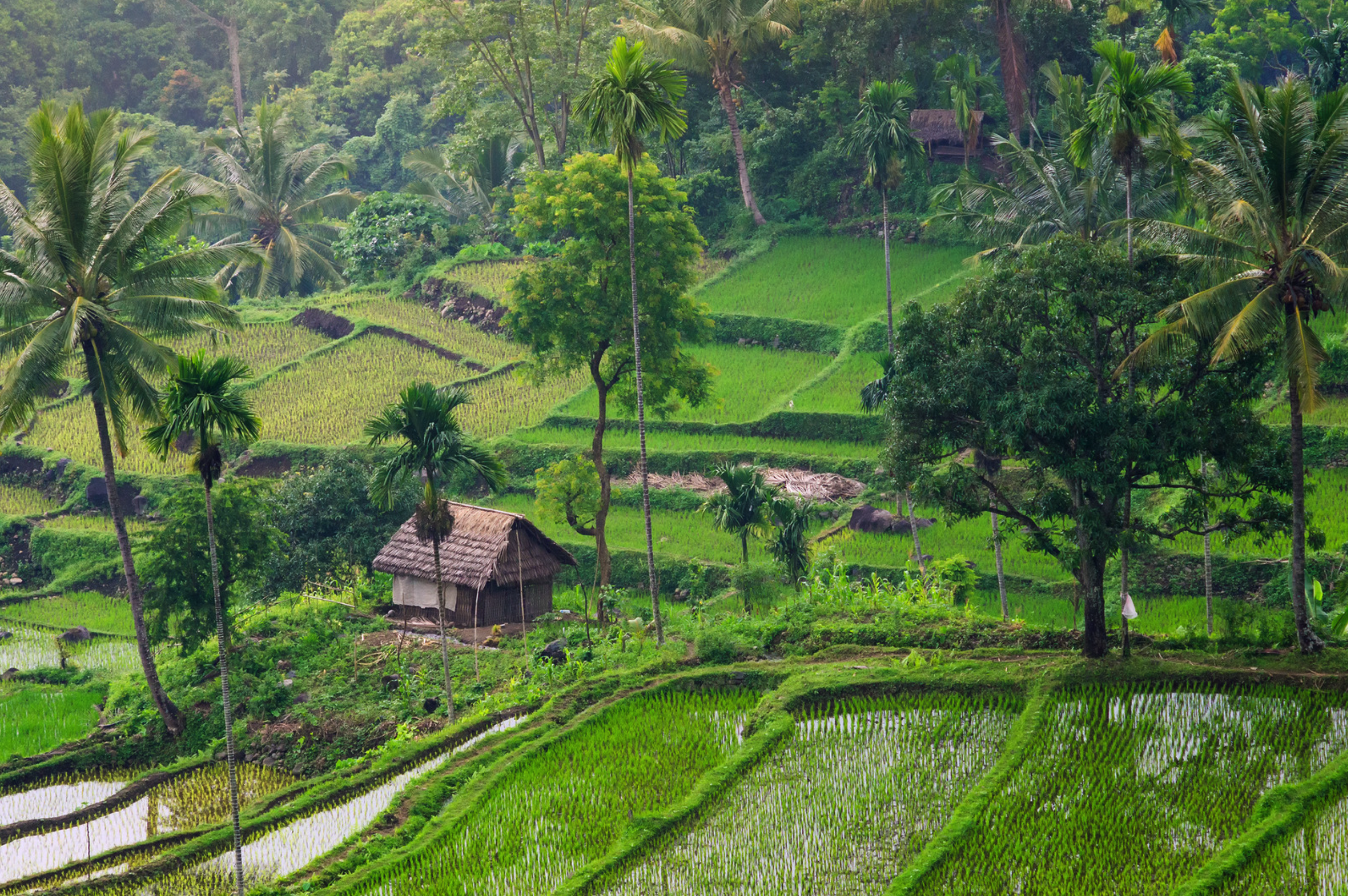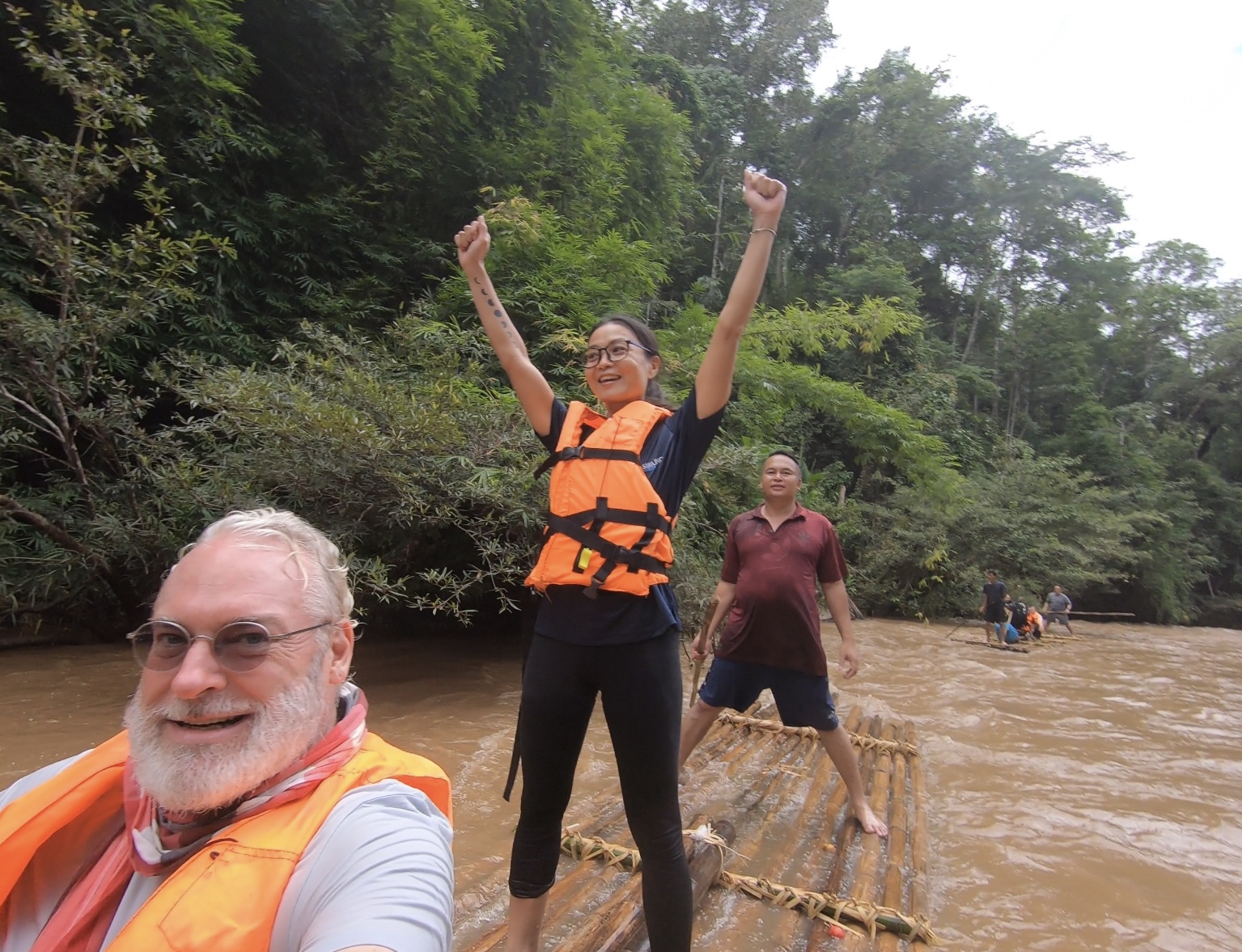Green Season Travel in SE Asia
11 APRIL 2024
Let's dive into Southeast Asia during its most misunderstood season. Picture this: a time when the landscape transforms into a high-definition version of itself, rain showers are as punctual as a Swiss train, with smiles so genuine they make a hardened curmudgeon grin.
Welcome to the Off-season
– or as the uninformed might call it, the rainy season, stretching from July to October.
The rainy season in Southeast Asia is like attending an exclusive party. The rain doesn’t pour as much as it performs, offering brief, thundering shows that leave plenty of time free for exploration. The generally predictable patterns mean you can dodge the droplets, turning what could be seen as a deterrent into an ideal break in the day’s adventures. (That said, playing in the warm monsoon rains is a pleasure all on its own.)
As the skies open up, so do the vistas, revealing lushness lacking at other times of the year. The jungles are a shade of green so vivid it looks surreal. The gardens and pots in Chiang Rai and Hoi An are fuller. The ivy on the walls of Angkor and Vientiane are heavier. The flowers bloom with an urgency that’s almost poetic. It’s nature turned up to eleven, a feast for the senses, and a photographer’s dream.

Roaring Rivers, Whispering Spirits
For the bold, the rainy season reveals nature’s power, turning rivers into gripping white-water tracks, waterfalls into riveting, thunderous spectacles, and swimming holes into a full day event. The world becomes a green, lush playground. It’s a little more raw, and it’s breathtakingly beautiful.
With fewer tourists around, the noise lifts a little, revealing a different mood in the region. Locals, freed from the weight of the high season, have time to share stories, offer insights, and display the kind of hospitality that’s rooted in genuine interest. It’s like stepping back in time to a Southeast Asia less affected by modern tourism, where the interactions feel more personal and the experiences feel more like a privilege.
This period also coincides with exceptional, less seen events that don’t exist on the rest of the calendar. Festivals like Tet Trung Nguyen (Wandering Souls’ Day) in Vietnam, Ngan Thet Sakal Hae Tian Phansa (the Candle Festival) in Ubon Ratchathani, Thailand, or Pchum Ben (Ancestors’ Day) in Cambodia show up quietly. They’re free from mobs, allowing you to get closer and even respectfully, participate.
Lighter on the Wallet, Richer in Experiences
Economically, traveling off-peak is like finding a secret menu in your favorite restaurant – everything is just better and a little less expensive. At the right venues, the lack of crowds means more attention, better service, and more time to enjoy. Hotels offer rooms at less startling prices, and attractions, free from typical dense hordes, allow for a more hushed exploration.
But, this off-season narrative is not just about saving a few bucks or avoiding the crowds; it’s about experiencing Southeast Asia in a way that few do. It’s about finding beauty in the rain, peace in the quiet, and joy in different connections.
The rainy season, with its unique blend of natural spectacle, cultural richness, and personal encounters, offers side door access to the heart and soul of the region. It’s not just travel; it’s an adventure of the spirit, a journey that changes not just your Instagram feed, but your perspective on what you think you can explore.

